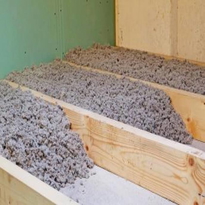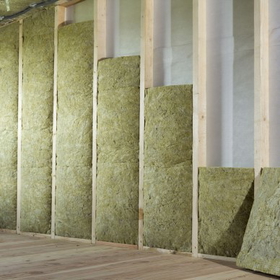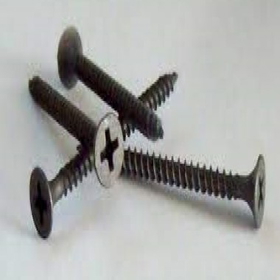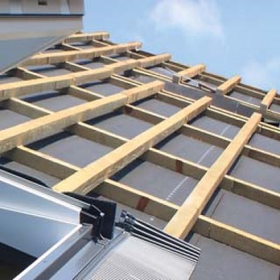Similar Categories
Cellulose Insulation: A Green and Effective Solution for Your Home
If you are looking for a way to improve the energy efficiency, comfort, and soundproofing of your home, you might want to consider cellulose insulation. Cellulose insulation is one of the most eco-friendly and cost-effective types of insulation available on the market.
In this article, we will explain what cellulose insulation is, how it works, what are its benefits, and where you can buy it online.
What is cellulose insulation?
Cellulose insulation is a type of loose-fill insulation that is made from recycled paper products, such as newspapers, cardboard, and office paper. The paper is shredded and treated with fire retardants, insecticides, and fungicides to make it safe and durable. Cellulose insulation can be installed in various ways, depending on the location and the desired R-value (a measure of thermal resistance).
The most common methods of installing cellulose insulation are:
- Blown-in: A machine blows the cellulose fibres into the attic floor, wall cavities, or other open spaces. This method creates a dense and uniform layer of insulation that fills all the gaps and cracks.
- Wet-spray: A machine sprays the cellulose fibres mixed with water and adhesive into the wall cavities or other closed spaces. This method creates a tight seal that prevents air leakage and reduces noise transmission.
- Dense-pack: A machine injects the cellulose fibres at high pressure into the wall cavities or other closed spaces. This method creates a compact and stable layer of insulation that resists settling and sagging.
How does cellulose insulation work?
Cellulose insulation works by trapping air in its tiny pores and creating a thermal barrier that slows down the heat transfer between the inside and the outside of your home.
Cellulose insulation also reduces the convection currents that can cause heat loss through air movement. Additionally, cellulose insulation absorbs sound waves and reduces the noise transmission between rooms or from outside sources.
What is the R-value of cellulose insulation?
The R-value of cellulose insulation is a measure of how well it resists heat flow. The higher the R-value, the better the insulation performance. According to the web search results, the R-value of cellulose insulation depends on the type and quality of the material, as well as the installation method and the climate conditions.
However, a general range of R-values for cellulose insulation is between 3.2 to 3.8 per inch of thickness. This means that cellulose insulation can provide effective thermal protection for your home, as well as other benefits such as soundproofing, fire resistance, pest resistance, and environmental sustainability.
What are the benefits of cellulose insulation?
Cellulose insulation offers many benefits for homeowners who want to improve their home’s performance and comfort. Some of the main benefits are:
- Environmentally friendly: Cellulose insulation is made from recycled paper products that would otherwise end up in landfills. It also saves energy by reducing the heating and cooling needs of your home, which lowers your carbon footprint and greenhouse gas emissions.
- Cost-effective: Cellulose insulation is cheaper than other types of insulation, such as fibreglass or spray foam. It also pays for itself in a few years by lowering your energy bills and increasing your home’s value.
- Fire-resistant: Cellulose insulation is treated with fire retardants that make it resistant to ignition and flame spread. It also creates a charred layer that protects the underlying structure from fire damage.
- Pest-resistant: Cellulose insulation is treated with insecticides and fungicides that make it resistant to insects, rodents, mould, and mildew. It also discourages nesting and burrowing by pests that can damage your home’s structure and wiring.
- Soundproofing: Cellulose insulation has a high density and a low air permeability that make it effective at blocking sound waves. It also reduces the vibration and resonance that can cause noise transmission through walls and floors.
Where can you buy cellulose insulation online?
If you are interested in buying cellulose insulation online, you can visit our website Buy Insulation Online, we are a leading online retailer of insulation products in the UK. We offer a wide range of insulation products from reputable brands, such as Armacell, Knauf, Thermofloc, Warmcel, Ecoquilt, Celotex, and more.
You can choose from different sizes, quantities, R-values, and installation methods to suit your needs and budget. You can also find all the accessories and tools you need to install cellulose insulation yourself or hire a professional installer.
Buy Insulation Online offers fast delivery, secure payment, customer support, and competitive prices. You can also benefit from our free technical advice, product guides, and customer reviews.
How does cellulose insulation compare to other types of insulation?
Cellulose insulation is a type of loose-fill insulation that is made from recycled paper products. It has some advantages and disadvantages compared to other types of insulation, such as fibreglass, mineral wool, or spray foam. Here are some of the main points of comparison:
- Thermal performance: Cellulose insulation has a higher R-value per inch than fibreglass or mineral wool, which means it provides more resistance to heat flow. However, cellulose insulation can settle over time and lose some of its R-value, while fibreglass and mineral wool retain their shape and effectiveness. Spray foam insulation has the highest R-value per inch and also creates an air seal that prevents heat loss through air leakage.
- Environmental impact: Cellulose insulation is considered one of the most eco-friendly types of insulation, as it is made from recycled paper products that would otherwise end up in landfills. It also saves energy by reducing the heating and cooling needs of your home, which lowers your carbon footprint and greenhouse gas emissions. Fiberglass and mineral wool insulation are also made from recycled materials, but they require more energy to produce and transport. Spray foam insulation is made from petroleum-based chemicals that have a high global warming potential and can emit harmful volatile organic compounds (VOCs).
- Fire resistance: Cellulose insulation is treated with fire retardants that make it resistant to ignition and flame spread. It also creates a charred layer that protects the underlying structure from fire damage. Fiberglass and mineral wool insulation are also nonflammable and can act as fire barriers. Spray foam insulation is flammable and can produce toxic smoke when burned.
- Pest resistance: Cellulose insulation is treated with insecticides and fungicides that make it resistant to insects, rodents, mould, and mildew. It also discourages nesting and burrowing by pests that can damage your home’s structure and wiring. Fibreglass and mineral wool insulation are also resistant to pests, but they can provide a habitat for them if they are not properly sealed. Spray foam insulation can also deter pests, but it can be damaged by rodents that chew through it.
- Soundproofing: Cellulose insulation has a high density and a low air permeability that make it effective at blocking sound waves. It also reduces the vibration and resonance that can cause noise transmission through walls and floors. Fiberglass and mineral wool insulation have lower densities and higher air permeabilities than cellulose, which makes them less effective at soundproofing. Spray foam insulation can also provide soundproofing, but it depends on the type and thickness of the foam.
Conclusion
Cellulose insulation is a green and effective solution for your home that can help you save money, energy, and the environment. It can also improve your home’s comfort, safety, and soundproofing.
If you want to buy cellulose insulation online, you can visit us at Buy Insulation Online today and browse our selection of high-quality products. You can also contact us for any questions or inquiries you might have about our products or services.
Frequently Asked Questions
Q: What is cellulose insulation?
A: Cellulose insulation is an insulation material that is made from recycled newspaper and other paper products.
Q: How is cellulose insulation made?
A: Cellulose insulation is made from recycled newspaper that is combined with a mineral fire retardant, usually borate, to make it fire resistant.
Q: What are the advantages of cellulose insulation?
A: Cellulose insulation is a sustainable and cost-effective insulation material. It is made from recycled materials and provides excellent sound reduction.
Q: How does cellulose insulation compare to fiberglass insulation?
A: Cellulose insulation has a higher R-value per inch compared to fiberglass insulation, meaning it provides better thermal insulation.
Q: Is cellulose insulation better than spray foam insulation?
A: Cellulose insulation and spray foam insulation have different properties and applications. Cellulose insulation is a loose-fill insulation that is suitable for attics, walls, and other areas. Spray foam insulation provides an airtight seal and is commonly used in areas where air leakage is a concern.
Q: How is loose-fill cellulose insulation installed?
A: Loose-fill cellulose insulation is usually blown into the desired space using specialized equipment. It can be installed in attics, walls, and floors.
Q: What is Thermofloc loose fill cellulose insulation?
A: Thermofloc loose fill cellulose insulation is a specific brand of loose-fill cellulose insulation. It is made from recycled newspaper and provides excellent thermal insulation.
Q: What are the disadvantages of cellulose insulation?
A: Cellulose insulation may settle over time, reducing its effectiveness. It can also absorb moisture if not properly installed or protected.
Q: Can cellulose insulation be used in new construction?
A: Yes, cellulose insulation can be used in new construction as well as in retrofit projects. It is a versatile insulation material.
Q: Is cellulose insulation environmentally friendly?
A: Yes, cellulose insulation is considered environmentally friendly because it is made from recycled materials and is biodegradable.






























































































































































































































































































































































































